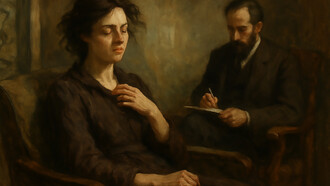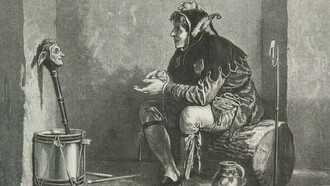Let the women stay at home and hold their peace.
(Aeschylus)
Living and ruling 2000 years before Aeschylus, Queen Kubaba of Mesopotamia was unaware that her place was in the kitchen. She brewed and sold beer in the city of Kish – an occupation well respected and customary among noble women. History and legend merge and remain unclear over her ascendance to the throne (she ‘seized power’) or the length of her reign (100 years). Kubaba is the first known female ruler, and she was a monarch in her own right, not attached to a husband or young heir.
In Africa and Asia women rulers were not that unusual, but in the patriarchal societies of Europe for a long time they remained quite a rarity.
Not just a pretty face
Among many of Egypt’s pharaohs, at least 12 were women; the name ‘pharaoh’ was no different for male or female ruler, so there may have been more. We don’t know much about the public opinion at the time, but history held a soft spot for Nefertiti, mainly on account of her beauty. Apart from the fact that Egypt enjoyed a period of prosperity during her reign, and she promoted monotheistic religion, she is mostly celebrated as ‘perfect of appearance’. This belief is based partly on the 3,000-year-old but extremely well-preserved bust uncovered in Amarna in 1912. It portrays a woman with high cheekbones, slender neck, full lips and lively eyes. Appropriately, her name means ‘the beautiful one has come’.
The most famous of Egyptian leaders is, however, Cleopatra VII Philopator (Cleopatra the Father-Beloved), the last active ruler of Egypt in the first century BC. Judging by her portrayal on canvas, on stage and on screen she was a very seductive woman. But was she as beautiful as Elisabeth Taylor in the 1963 film? It is likely that her physical appearance was no more than average. ‘Not all together incomparable, nor such as to strike those who saw her’ as Plutarch put it. She charmed Julius Caesar and Mark Anthony with her intelligence, wit and ‘sweetness in the tone of her voice’. She was fluent in nine languages, including Arabic and Hebrew (her mother tongue was Koine Greek); she was knowledgeable in mathematics and philosophy; her conversation was sparkling. And she had a talent for making herself agreeable to everyone. She died by suicide (possibly) bitten by a poisonous snake before reaching middle age – the perfect Romantic heroine.
Apart from her ability to charm and influence powerful men, it was her suicide that inspired painters, poets and playwrights from Renaissance to the 20th century. From opera to soap, her name conveyed beauty, charm and exoticism.
De facto leaders
Western civilisations had set ideas about the role of women in society and it did not include public life. The women’s place remained much as designated by Aeschylus in 456 BC, at least in general perception.
During Renaissance and Baroque, it looked like that was about to change; a relatively high number of women ruled European states during that period. As society was not yet ready to accept women as rulers, they often had to hide behind a husband, a brother or a son in order to control political life.
One of the most powerful women of the Middle Ages, Eleanor of Aquitaine, queen of France and then queen of England was one such ruler. Through inheritance she became a very wealthy eligible single woman, aged just 15, and married Louis who soon became king of France. Two months after the annulment of this marriage, she was married, again, to the heir to the English throne. She commanded armies, led a crusade to the Holy Land, was held prisoner for 16 years, and ruled England as regent into her 70s. Eleanor is mostly remembered for encouraging the arts and poetry, which flourished during her reign. Despite her power and influence, there are no descriptions or portrayals of Eleanor by her contemporaries, except to praise her as ‘more than beautiful’, gracious and charming. Later artists felt free to imagine her as they wished, dark or blonde, blue eyes, brown eyes, tall or short. In the 19th century, in one of the few portraits of the queen, Frederick Sandys gave her long auburn hair and a determined gaze. From Shakespeare to Ezra Pound, literature was more generous in creating an image of Eleanor, which led to further incarnations on stage, on screen and TV.
Martyrs and traitors
At six days old, Mary was probably the youngest queen in history. Engaged to the Dauphin of France aged five, Mary grew up in France; in the space of 18 months she got married, became queen consort and then a widow, returning to Scotland at 19. She married again at 23, but the marriage ended less than two years later when her husband was assassinated. Mary married James Hepburn,4th Earl of Bothwell, one of the people accused of murdering her husband, following her abduction (and possibly rape) by Bothwell. Denounced as adulteress and murderer, Mary sought refuge in England, then ruled by her cousin, Elisabeth. That proved to be an error of judgement, as the virgin queen did not welcome her guest; Mary was repeatedly imprisoned and eventually executed. The adventurous life and the rivalry between the two cousins established them as perfect romantic heroines. The contrast between the tempestuous Mary and the clever and imperial Elisabeth provided rich material for novels, plays and operas. From Sarah Bernard to Hellen Mirren, Katharine Hepburn, Cate Blanchett and Saoirse Ronan, the silver screen featured many interpretations of Mary and Elisabeth, who are probably the most filmed monarchs.
During the Elisabethan era theatre enjoyed a Renaissance, with plays by Shakespeare and Christopher Marlow performed to great success. Painting also flourished, dominated by portraiture. The Queen is depicted in many portraits, works that go beyond simple likeness to represent, through symbols, the entire narrative of power, elegance and purity.
Whether they ruled for 100 years, like Queen Kubaba, or nine days, liked Lady Jane Grey, these women chose to get out of the house and shape history.
So, most mighty Queen we pray,
Like the dial day by day
You may lead the seasons on,
Making new when old are gone.(William Shakespeare)














